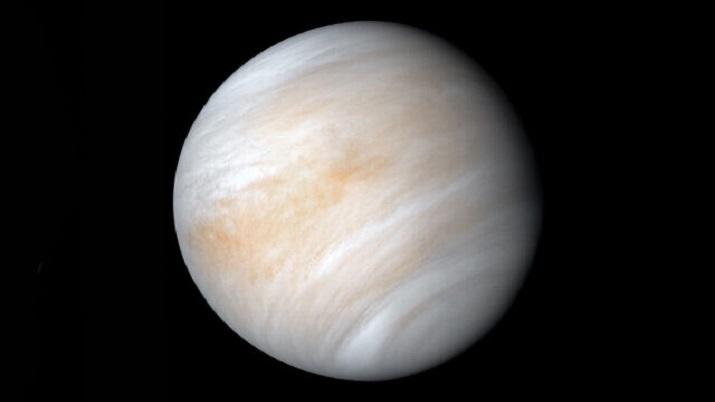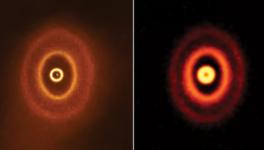Detection of Phosphine on Venus Triggers Debate on Presence of Life

Image Courtesy: NASA
A wave of excitement has erupted about the possibility of life on Venus, the planet nearest to Earth, soon after a paper published in Nature Astronomy reported the detection of gas phosphine in the Venusian cloud.
Phosphine is made up of one phosphorus atom and three hydrogen atoms. Till date, what we know about phosphine is that it can be produced by life, mostly anaerobic bacteria, which lives in oxygen starved areas like landfills, marshlands, swamps and also in animal guts like that of penguins.
Phosphine can be produced industrially as well and was used as a chemical weapon during World War I and still used as an agricultural fumigant. But on Venus, phosphine’s existence is being seen as a possibility of the presence of life there.
Now, how far can we really be sure of the presence of life on Venus and the possibility of life forms making phosphine? Well, the answer is—we can’t be sure as of now.
The lead author of the paper, Professor Jane Greaves of Cardiff University, United Kingdom, and his colleagues said that the origin of the gas could also have some non-biological and natural pathways. However, nothing could be made conclusive with the available data and knowledge.
Prof Greaves commented in this regard— “Through my whole career I have been interested in the search for life elsewhere in the Universe, so I'm just blown away that this is even possible. But, yes, we are genuinely encouraging other people to tell us what we might have missed. Our paper and data are open access; this is how science works."
The team of researchers detected phosphine on Venus with the help of James Clark Maxwell Telescope located in Hawaii. They, hereafter, confirmed the presence of the gas in the atmosphere of Venus using the ALMA (Atacama Large Millimetre/Submillimetre Array), an array of telescopes situated at a high plateau in Chile.
The radio telescopes could detect phosphine that has a distinctive absorption line at a wavelength of about 1 millimetre. The gas was detected 50 kilometres up above the surface of the planet. The concentration of the gas was found to be 10-20 parts per billion, which means 10-20 parts of the gas in every billion molecules in the atmosphere. This is not a very significant concentration as such, but in this context, it is a good amount.
Searching for life forms outside Earth has been an old and romantic scientific endeavour. Planet Venus in this context has not gathered much attraction. This is due to its extremely unfavourable climatic conditions. Its surface reaches a temperature of sweltering 900 degree Fahrenheit and its atmosphere has over 96% carbon dioxide. However, the cloud surrounding the planet became a point of interest to search for life there as it has the ingredients—sun, water and organic molecules, necessary for life.
The clouds, however, is composed mainly of sulphuric acid over 75%, which is a devastating situation for life as we perceive in Earth. Dr. William Bains, the biochemist in the team of researchers, studied possible other ways of producing phosphine, like volcanoes, lightning, meteorites etc. However, all of the chemical reactions that he studied were “10,000 times too weak to produce the amount of phosphine that's been observed”—he said.
Regarding the possibility that airborne microbes are the factors to produce the phosphine, Dr. Bains was quoted to have said—“In principle, a more water-loving life could hide itself away inside a protective shell of some sorts inside the sulphuric acid droplets. We're talking bacteria surrounding themselves by something tougher than Teflon and completely sealing themselves in. But then how do they eat? How do they exchange gases? It's a real paradox."
Get the latest reports & analysis with people's perspective on Protests, movements & deep analytical videos, discussions of the current affairs in your Telegram app. Subscribe to NewsClick's Telegram channel & get Real-Time updates on stories, as they get published on our website.

















